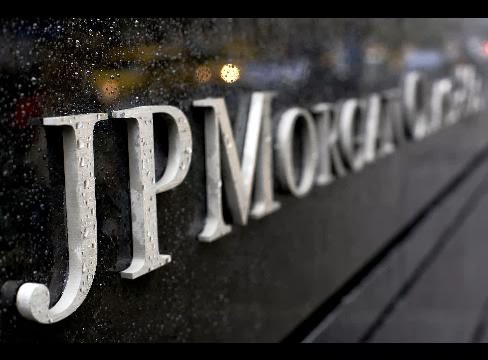While everyone is focused on the massive outflows in COMEX registered gold inventories and the gold ETF, GLD, it seems that an important evolution in silver is passing unnoticed. In what follows, Ted Butler, precious metals analyst specialized in COT analysis, reveals a remarkable insight in the physical silver market.
Butler’s calculations show that JPMorgan (NYSE:JPM) has piled up the largest holding of physical silver in modern world. Since the silver price peak in May 2011, the bank has accumulated between 100 and 200 million ounces of physical silver (if not more). The equivalent in metric tonnes is between 3,110 and 6,220 tonnes.
To put that number in perspective, it surpasses the amounts held by the Hunt Brothers or Warren Buffett (in his investment company Berkshire Hathaway).
On a yearly basis, some 100 million ounces of silver reach the investment market, which translates into 250 million ounces between May 2011 and December 2013. That has a value of approximately $5 billion. Given the size of the too-big-to-fail bank, that amount of silver, how large it may seem, is easily affordable:
JP Morgan’s quarterly profit is $5 billion (approximately 200 million ounces of silver).
In 2013, the closing of the gold short position, as well as the 20,000 contract reduction in the silver short position, netted JPM more than $3 billion.
In COMEX silver, JPM was the largest buyer in 2013.
These facts make it reasonable for JPM to be a big buyer in physical silver.
Methodology
JP Morgan knows the financial markets better than anyone else. It is no coincidence that the bank is (ab)using that knowledge to their own benefit. Evidence of that lies in the record number of penalties for which they have been accused because of market manipulation.
Butler explains that JPM was able to accumulate so much silver without being noticed through the big silver ETF, SLV. In his weekly commentaries to his premium subscribers, he has explained on numerous occasions that the physical silver holdings in SLV have been largely intact on a net basis, but there was a large “churn” in the holdings, which allows for a large buyer to go unnoticed. For instance, 60 million oz were liquidated in the two months after the price smash in May 2011; they were right away absorbed by a big buyer. The data are available on this site http://about.ag/SLV/.
Furthermore, the conclusion that JPM has been the big buyer in physical silver is confirmed by the following facts:
The growth of metal in the JPM COMEX silver warehouse over the past three years was 45 million oz.
The recent delivery stopped by the bank in December/January COMEX deliveries was 15 million oz.
JPM, being a master in manipulating financial markets, has also (ab)used their ability to set the silver price in the leveraged paper COMEX market, while simultaneously benefiting from lower prices to accumulate the physical metal.
“Causing the price of silver to be depressed via a concentrated short position on the COMEX along with the ability to crush prices in an HFT second, to then scooping up physical metal (and covering paper shorts) at the self-created depressed prices.
What this also highlights is the madness and illegality of having the paper price on the COMEX setting the price in the physical market. If JPM hadn’t been capable of rigging silver prices lower in 2013, it would never have been able to buy back 100 million ounces of short paper contracts and buy many tens of millions of physical silver as well.”
Motive
The underlying motive for JPM to accumulate such a large amount of silver is most likely related to the fact that the bank was on the wrong side of the market when the silver price exploded.
When silver went through its historic rally in March and April 2011, the weekly COT data indicated that speculators did not rush into COMEX futures, which means that the peak in the silver price was not driven by speculation in silver futures. On the other hand, there was buying in the big silver ETFs, including record short selling in SLV.
“So, if it was not highly leveraged speculative paper buying on the COMEX that drove silver prices to the peak, it had to be buying in the physical market (including the ETFs). Therein resides my conviction that we were on the cusp of the first wholesale physical silver shortage in history in April 2011. And clearly it was the investment side of silver’s unique dual physical demand (investment/industrial) that pushed prices higher, as there was no great rush by industrial users into physical silver.
JPM was on the wrong side of the silver market: neither the total commercial net short position nor the concentrated short position of the four largest shorts (including JPM) increased in any way and, in fact, both began to decline in April. This implies that speculators, particularly the technical funds, not only didn’t add to long positions, but reduced long positions on the $15 price jump from March 1, 2011.”
What does this indicate? The explanation that makes most sense is that JPM realized that it was on the wrong side of the trade, after having discovered how tight the physical silver market was. Consequently, the bank had to crush the silver price with their HFT tricks in order to reverse the trend. By doing so, JPM could regain control over the silver market.
Meantime, JPM has built the longest position in physical silver in recorded history. It holds its grip on the silver price through its short corner in COMEX silver.
Ted Butler has written time and time again that the extent to which JPM adds new short contracts on the next silver rally will determine the strength of the rally. Simply put – if JPM doesn’t add new short positions, the manipulation is over. Someday, JPM won’t add to silver short positions and they, more than anyone else, will be best positioned to realize massive gains.


Comments
Post a Comment